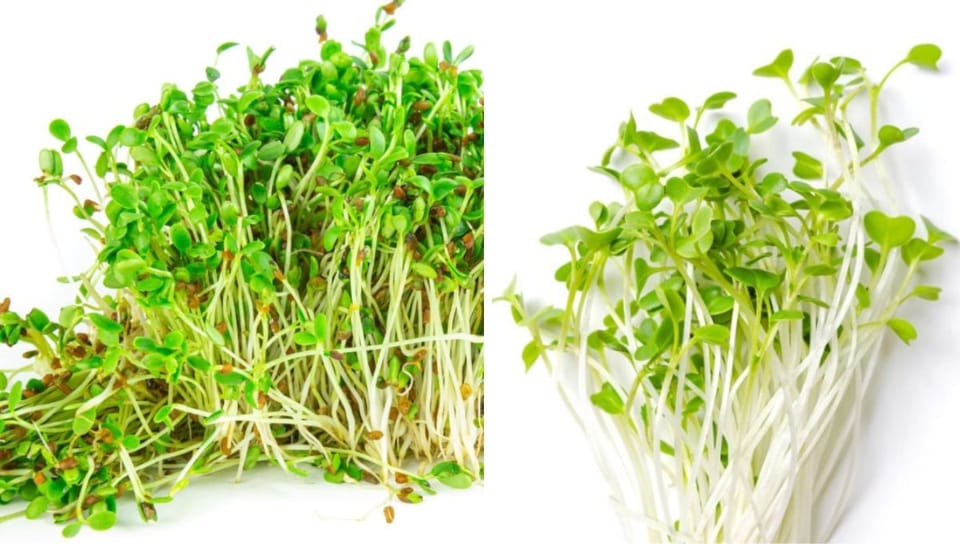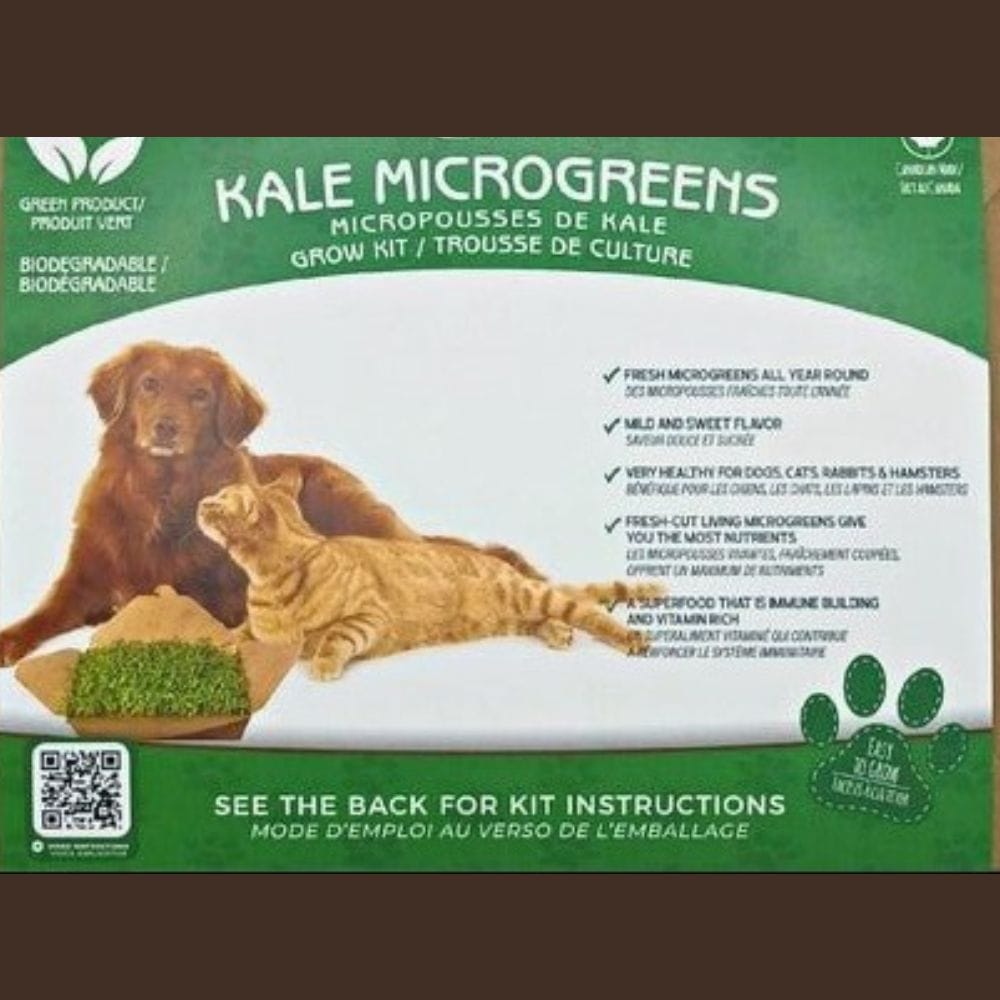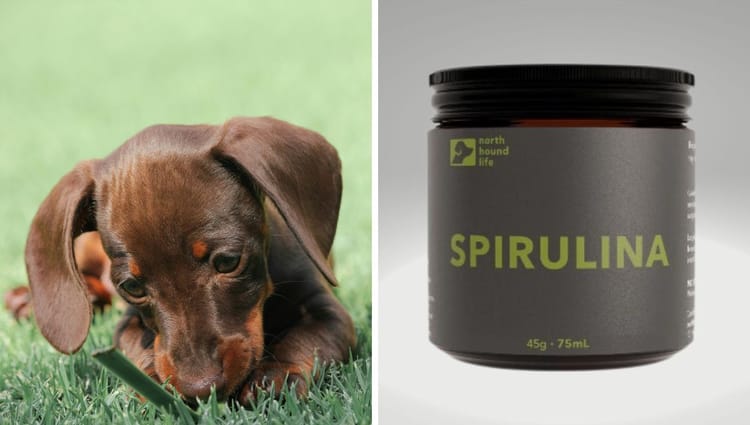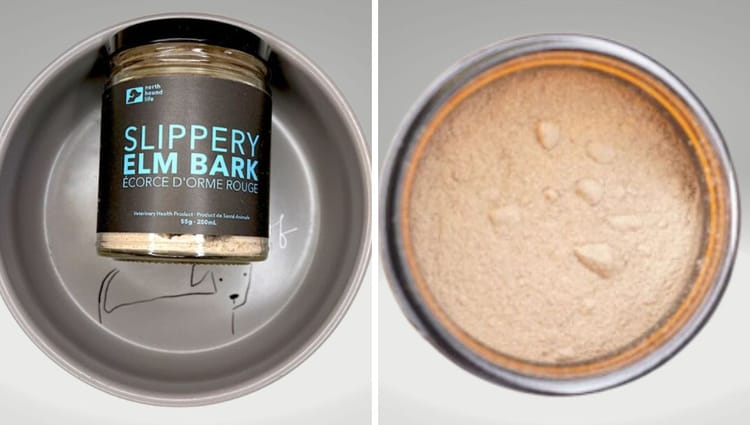Kale Microgreens for Dogs: A Nutritional Powerhouse

Key Takeaways:
- Kale microgreens are a nutrient-dense addition to your dog's diet, offering vitamins, minerals, and antioxidants.
- Introducing kale microgreens can improve your dog's digestion, immune system, and overall health.
- Proper preparation and moderation are crucial to safely incorporating kale microgreens into your dog's meals.
The Nutritional Benefits of Kale Microgreens
Kale microgreens are tiny, young plants harvested just after the first leaves have developed. Despite their small size, they pack a punch in terms of nutrition. These microgreens are rich in vitamins A, C, and K, which are essential for maintaining your dog's vision, immune function, and bone health. Additionally, they contain significant amounts of calcium, iron, and magnesium, which support various bodily functions, including muscle and nerve function.
Moreover, kale microgreens are loaded with antioxidants, which help combat oxidative stress and reduce inflammation. This can be particularly beneficial for older dogs or those with chronic health conditions. By incorporating kale microgreens into your dog's diet, you're providing them with a natural source of essential nutrients that can enhance their overall well-being.
How to Introduce Kale Microgreens to Your Dog's Diet
Introducing kale microgreens to your dog's diet should be done gradually to avoid any digestive upset. Start by adding a small amount to their regular food and observe how they react. If your dog shows no signs of discomfort, you can slowly increase the quantity over time. It's important to remember that moderation is key; too much of any new food can cause gastrointestinal issues.
One practical way to incorporate kale microgreens is by mixing them into your dog's meals. You can chop them finely and sprinkle them over their kibble or mix them into wet food. Another option is to blend the microgreens into a smoothie with other dog-friendly ingredients like carrots and apples. This not only makes it easier for your dog to consume but also adds variety to their diet.
Potential Health Benefits for Dogs
Kale microgreens offer several health benefits for dogs. The high fiber content aids in digestion and can help prevent constipation. Additionally, the vitamins and minerals found in these microgreens support a healthy immune system, which is crucial for warding off illnesses and infections. The antioxidants present in kale microgreens also play a role in reducing inflammation, which can be beneficial for dogs with arthritis or other inflammatory conditions.
Furthermore, the calcium and magnesium in kale microgreens contribute to strong bones and teeth, while the iron supports healthy blood circulation. By incorporating these nutrient-dense microgreens into your dog's diet, you're not only enhancing their nutritional intake but also promoting their overall health and longevity.
Preparing Kale Microgreens for Your Dog
Before feeding kale microgreens to your dog, it's essential to prepare them properly. Start by thoroughly washing the microgreens to remove any dirt or pesticides. Organic microgreens are preferable as they are less likely to contain harmful chemicals. Once cleaned, you can chop the microgreens into small, manageable pieces to make them easier for your dog to eat.
It's also a good idea to introduce the microgreens in their raw form initially. However, if your dog has a sensitive stomach, you can lightly steam the microgreens to make them more digestible. Avoid adding any seasonings or oils, as these can be harmful to dogs. By preparing the microgreens correctly, you ensure that your dog receives the maximum nutritional benefits without any adverse effects.
Signs Your Dog Might Enjoy Kale Microgreens
Dogs, like humans, have individual preferences when it comes to food. Some dogs may take to kale microgreens immediately, while others might need some time to adjust. Signs that your dog enjoys kale microgreens include eagerly eating their food when the microgreens are added, showing excitement during meal times, and displaying overall improved energy levels and health.
If your dog is hesitant at first, try mixing the microgreens with their favorite foods to make them more appealing. You can also experiment with different preparation methods, such as blending the microgreens into a smoothie or incorporating them into homemade dog treats. By paying attention to your dog's reactions and preferences, you can find the best way to include kale microgreens in their diet.
Potential Risks and Precautions
While kale microgreens are generally safe for dogs, there are a few potential risks to be aware of. Some dogs may have allergies or sensitivities to certain vegetables, including kale. If you notice any signs of an allergic reaction, such as itching, swelling, or gastrointestinal distress, discontinue feeding the microgreens and consult your veterinarian.
Additionally, kale contains oxalates, which can interfere with calcium absorption and potentially lead to kidney stones in susceptible dogs. To minimize this risk, it's important to feed kale microgreens in moderation and as part of a balanced diet. Always consult with your veterinarian before introducing any new food to your dog's diet, especially if they have pre-existing health conditions.
Case Study: Bella's Journey with Kale Microgreens
Bella, a seven-year-old Labrador Retriever, had been struggling with arthritis and low energy levels. Her owner, Sarah, decided to try incorporating kale microgreens into Bella's diet after reading about their potential health benefits. She started by adding a small amount of chopped microgreens to Bella's meals and gradually increased the quantity over a few weeks.
Within a month, Sarah noticed significant improvements in Bella's energy levels and mobility. Bella seemed more playful and active, and her arthritis symptoms appeared to be less severe. Encouraged by these positive changes, Sarah continued to include kale microgreens in Bella's diet, and Bella's overall health and well-being continued to improve.
Growing Your Own Kale Microgreens
Growing your own kale microgreens at home is a cost-effective and convenient way to ensure a fresh supply for your dog. Start by purchasing organic kale seeds from a reputable source. You'll also need a shallow tray, potting soil, and a sunny spot or grow light. Spread the seeds evenly over the soil and lightly cover them with a thin layer of soil.
Keep the soil moist but not waterlogged, and within a week or two, you'll see the microgreens sprouting. Once the microgreens reach a height of about 2-3 inches, they are ready to harvest. Simply snip them off at the base with scissors, wash them thoroughly, and they're ready to be added to your dog's meals. Growing your own microgreens ensures that they are free from pesticides and other harmful chemicals.
Other Microgreens to Consider for Dogs
While kale microgreens are highly nutritious, there are other microgreens that can also benefit your dog's health. Broccoli microgreens, for example, are rich in vitamins C and K, as well as sulforaphane, a compound known for its anti-cancer properties. Sunflower microgreens are another excellent option, providing a good source of protein, healthy fats, and essential vitamins and minerals.
Radish microgreens are known for their digestive benefits and can help support a healthy gut. Pea microgreens are rich in antioxidants and provide a good source of plant-based protein. By incorporating a variety of microgreens into your dog's diet, you can ensure they receive a wide range of nutrients that support their overall health and well-being.
Consulting with Your Veterinarian
Before making any significant changes to your dog's diet, it's always a good idea to consult with your veterinarian. They can provide personalized advice based on your dog's specific health needs and dietary requirements. Your veterinarian can also help you determine the appropriate amount of kale microgreens to include in your dog's diet and monitor for any potential adverse reactions.
If your dog has any pre-existing health conditions or is on medication, your veterinarian can advise you on whether kale microgreens are a suitable addition to their diet. By working closely with your veterinarian, you can ensure that your dog receives the maximum benefits from kale microgreens while minimizing any potential risks.
Summary
Kale microgreens are a nutrient-dense addition to your dog's diet, offering a range of vitamins, minerals, and antioxidants that support overall health. By introducing these microgreens gradually and in moderation, you can enhance your dog's digestion, immune system, and energy levels. Proper preparation and consultation with your veterinarian are essential to ensure the safe and effective incorporation of kale microgreens into your dog's meals.
FAQ
1. Can all dogs eat kale microgreens?
Most dogs can safely consume kale microgreens, but it's important to introduce them gradually and in moderation. Some dogs may have allergies or sensitivities to certain vegetables, so it's always best to consult with your veterinarian before adding any new food to your dog's diet.
2. How much kale microgreens should I feed my dog?
The amount of kale microgreens to feed your dog depends on their size, age, and overall health. Start with a small amount, such as a teaspoon for small dogs or a tablespoon for larger dogs, and gradually increase the quantity over time. Always monitor your dog for any signs of digestive upset or allergic reactions.
3. Can I grow kale microgreens at home?
Yes, growing kale microgreens at home is a cost-effective and convenient way to ensure a fresh supply for your dog. You'll need organic kale seeds, a shallow tray, potting soil, and a sunny spot or grow light. With proper care, you can harvest your own kale microgreens within a few weeks.






